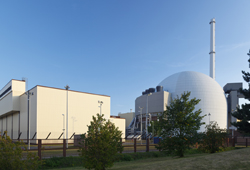New cooling technology for nuclear reactors
Supercritical water (at very high temperature and under very large pressure) has been exploited recently as a coolant for increasing the efficiency of modern coal-fired power plants. Enabling a more compact plant design as well, the use of supercritical water has lead to important decreases in plant construction costs. Assessing the feasibility of similar enhancements to light water reactors (LWRs), nuclear reactors that use ordinary water for heat removal, was facilitated with EU funding of the ‘High performance light water reactor - Phase 2’ (HPLWR PHASE 2) project. Scientists delivered the first-ever design of a light reactor operated at supercritical pressure and temperatures, the proposed high-performance LWR (HPLWR). The theoretical description included the mechanical design of the core, reactor pressure vessels and internals, the steam cycle and relevant safety systems. Analysis and refinement of the design was carried out with particular consideration of the goals of the Generation IV International Forum (GIF). GIF is an international endeavour to carry out research and development related to the establishment of feasibility and performance capabilities of next-generation nuclear systems. Overall, the impact of HPLWR PHASE 2 on research and design of next-generation nuclear reactors is expected to be significant, enabling more efficient reactors at a lower cost without compromising safety.

